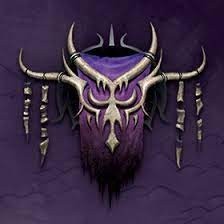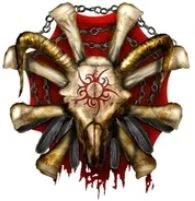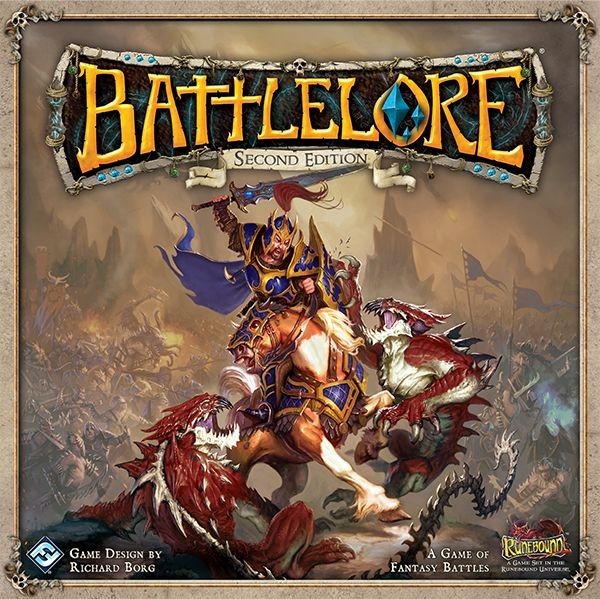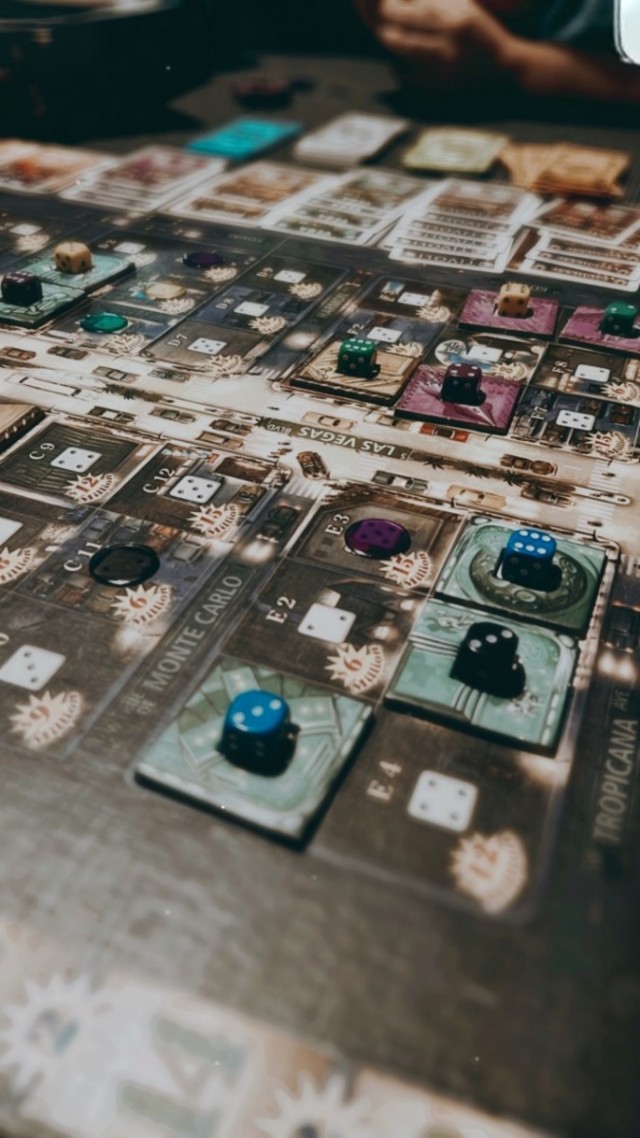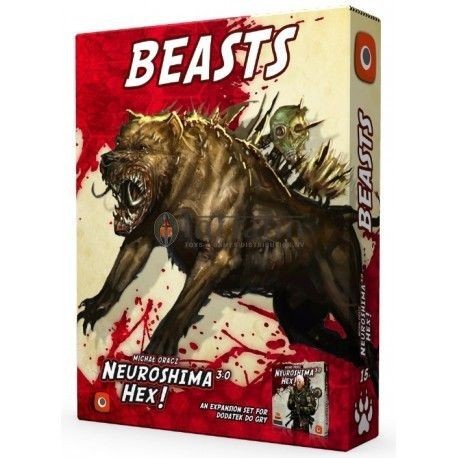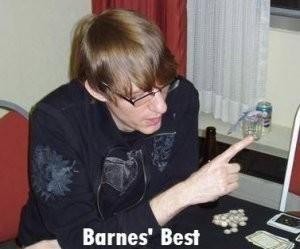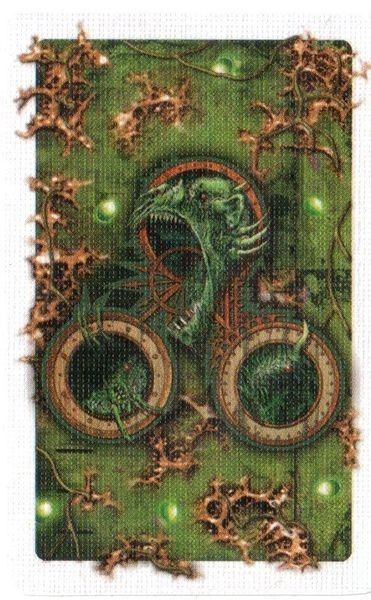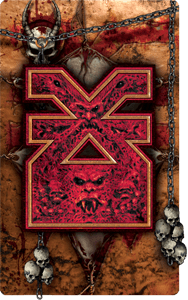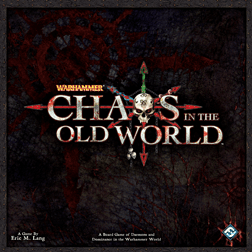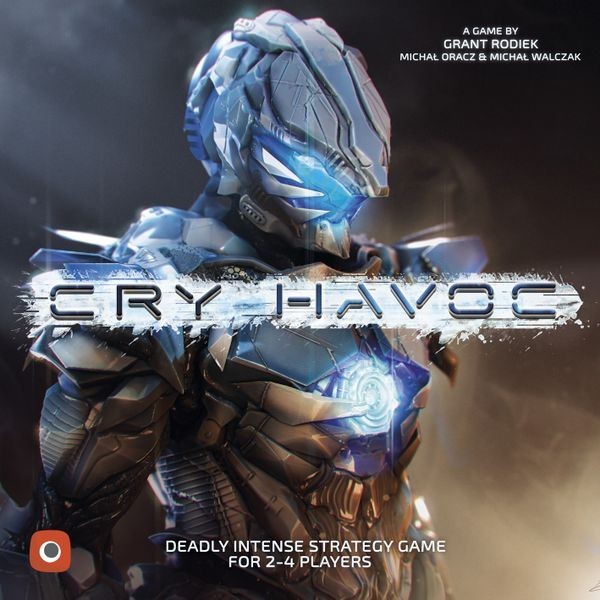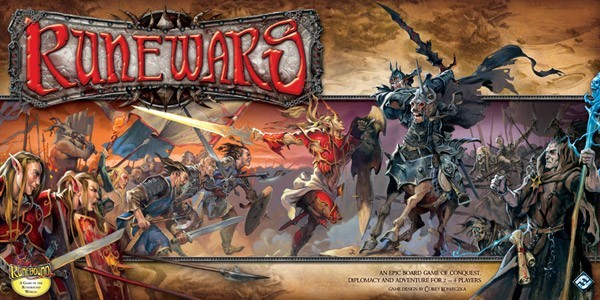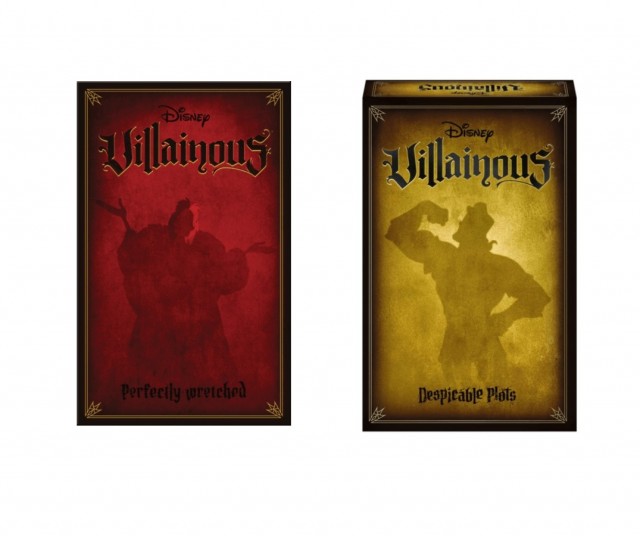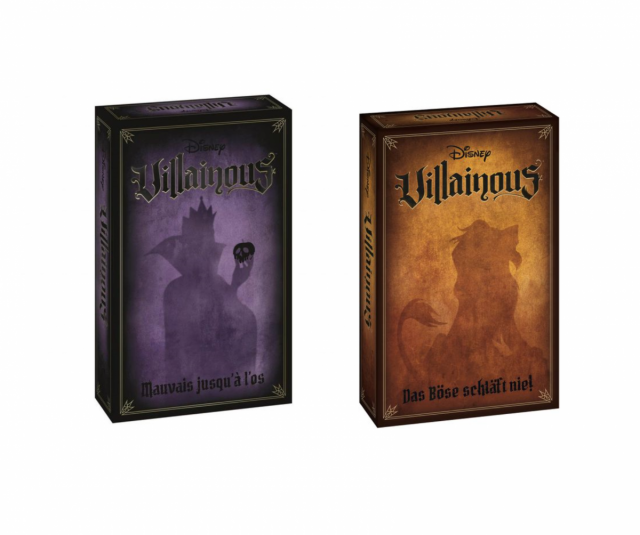Wade and Marc take a look at the trio of Dudes on a Map (DoaM) games from Matagot that often don't play anything like that type of game.
Cyclades, Inis, and Kemet are a mildly mythical (ahem) trio of games from Matagot that present themselves as three different takes on the DoaM approach: auction/civ building, drafting/card-driven, and deck-building/offensive, respectively, and involving three sets of myths/gods: Greek, Celtic, and Egyptian, respectively. The question that occurred to Wade and I was: Are these really DoaM games? All of that type of game use some elements that these three utilize, but all of these three take them to an extreme; to the point where one begins to question whether you’re playing a “build up my hordes and control as much territory as I can” game or something where those hordes are incidental, at best.
Wade: Cyclades is a sheep in wolves’ clothing. When you lay it out on the table, it’s full of armies, ships, and miniature representations of Greek mythological creatures waiting on the sidelines to destroy mere mortals. And just when everyone is ready to crush their enemies, see them driven before them, and bask in the lamentations of their citizens… you start playing an auction game.
Marc: Yep. With all of the fleets and dudes holding spears, you’re thinking that this is a wargame with Greek gods involved. And it is, to a point. But it’s actually more of a civ-building game where the troops and boats are ways for you to generate cash so that you can build more buildings, not really exterminate your opponent. In fact, there’s a rule that you can't exterminate an opponent unless you can win on that turn. Given that, plus the facts that the military buildings only function in a defensive capacity and that it’s impossible to build a chain of fleets and attack with troops in the same turn, it becomes quite difficult to cite this as a “wargame”. It’s much more Sierra’s Zeus city-building game than it is Greece: Total War. But I think that was Matagot’s intent. It’s a way to ease people into things like Twilight Imperium and I’ve used Cyclades for exactly that: getting my wargaming fix while bringing in other players who never would have sat down to a game of Runewars. But then there’s Titans.
Wade: Titans isn’t so much an expansion as it is a reimagining of Cyclades. It’s as if they heard the feedback of players who were expecting a “Dudes on a Map: Battle for the Ages” and said “We can do that.” Gone are the predetermined placement of troops and ships and the initial god you bid on can define your strategy. It also allows for team play, for those nights you actually want to avoid sleeping on the couch for pillaging your wife’s Metropolis.
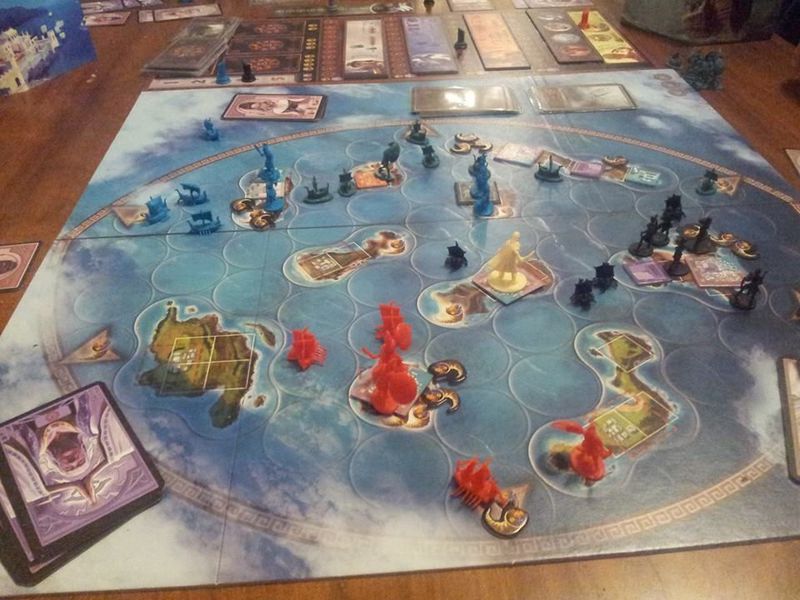
Marc: The Hades expansion also does some of that, by giving not only another outlet to do battle things if Ares isn’t in play or you don’t win the auction for him, but also presenting the only way to buy troops and fleets at the same time and execute a move with both if you don’t have either the Sylph or Pegasus. Plus, many of the magic items and all of the heroes included have military applications that pushes the game back from being Civilization and more toward being Twilight Imperium. I think the best strategy is still to try to get an edge on the economic side, but that’s true of many DoaM games (more territory, more resources.) But so much of the Hades expansion being oriented toward military efforts (including benefiting from other players fighting, with the Necropolis) makes me think that at least some of it was included in the original design and then pulled out to keep the complexity comfortable.
Wade: I’ve only played the Hades expansion a couple of times and I wasn’t a fan. Hades felt like a tactical nuke and it became a game of trying to stop anyone else from using it. It always seemed to me that this became a focus of the game instead of the actual gameplay. The heroes also seemed too expensive to be practical. But, like I said, I only had a couple of plays. I opted to extend my Cyclades experience with the Titans expansion and the C3K expansion (The Creature Crossover that lets you use monsters from Cyclades in Kemet and visa versa.)
Marc: I think what Hades added was a fair amount of texture: the last of the three brothers on Olympus (Zeus, Poseidon, Hades); the famous heroes that so often accompany the monsters in the legends (Perseus, etc.); the famous items of legend. Whereas Titans offered up a whole new way to play the game, Hades offered additional chrome to the original style. I don’t recall that I’ve ever mixed the two expansions, but my plays of Titans are less than the original game, with or without Hades. Also, one thing that’s always struck me as a bit of a weak point in Cyclades is the fact that Athena is basically just a timer. Universities don’t do anything. Philosophers don’t do anything except cost a lot and provide an outlet to victory for players that have a lot of cash to spare. She’s there just to slow the pace of the game and/or provide something for players to do if they’re locked out of the more active gods and don’t need to visit Apollo.
Wade: I always saw Athena as a “How close have you been paying attention?” mechanism. It is easy to get distracted over a hotly contested bit of real estate with two or three players vying for control, plotting attacks and timing the use of creatures. Meanwhile, another player is laying low, has just hit Althena a couple of rounds in row and suddenly drops a Metropolis from the heavens to trigger endgame. The complete (perceived) lack of usefulness of Athena make her easy to ignore and I’ve had that lead to my demise more than once.
Marc: Yeah, that’s a fair point, although I’ve found that two players banging heads over one piece of territory are losing the forest for the trees, regardless of whether there’s an internal clock being placed on them by the “alternate win method” mechanism. I'm not trying to imply that I don't like the inclusion of Athena and her various mechanics to the game. I think it's a smart addition to keep things tuned to that civ-building approach; again, if you're into that kind of thing.
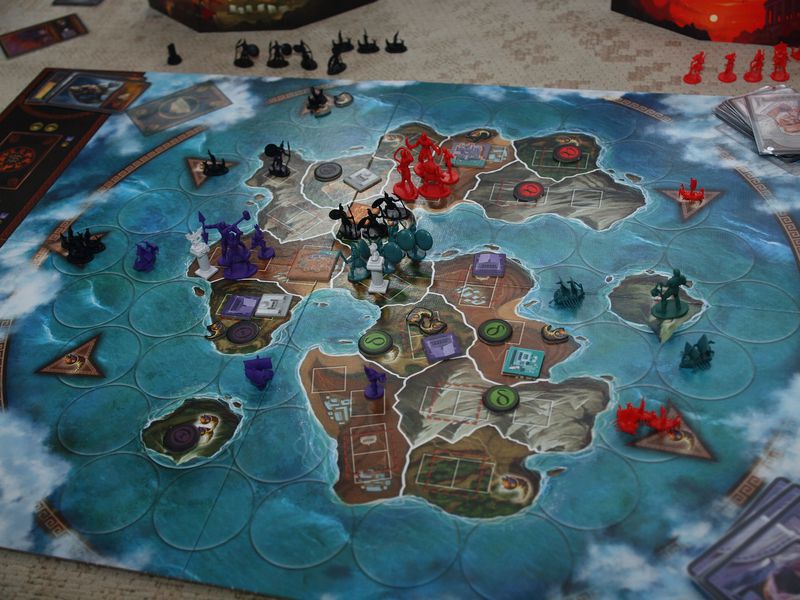
Wade: I would also be remiss if I didn’t mention that I have never, ever won a game of Cyclades. Ever. I’ve tied a few and lost on remaining gold. But if I answered the door today and heard “Excuse me sir, do you have a moment to talk about our lord and saviour and a quick game of Cyclades?” I’d set it right up. It is that much fun for me.
Wade: OTOH, when dawn breaks on the first day of Kemet, you can rest assured of one thing: by the time the sun sets, there will be blood.
Marc: It’s certainly clear that, of the three, offense is most highly favored in Kemet, since you only gain permanent VP by winning as an attacker, not as a defender. That said, there’s an obvious restraint built in by the fact that there are only two movement actions available in each round and, without teleportation or tiles, you can only move one space. That plus the presence of walls, where you typically need two moves to take an enemy city spot, prevents all-out destruction from one round to the next.
Wade: I love that I wanted to interrupt you a couple of times during that comment to say “Unless you have a tile that lets you break that rule.” Defensive victory points? There’s a tile for that. Add an additional move action? There’s a tile for that.
Marc: Right. That’s why I referred to Kemet as a “deck-building” game, because you can certainly tailor your strategy based on which tiles you extend yourself for and, of course, have that plan going in, as well. My impression has always been that either a Red or Blue strategy is generally more successful than a White one, since the game will often be over by the time you can really ramp up White’s power, but having one or two tiles of White can fuel the Red or Blue engine that you’re trying to field.
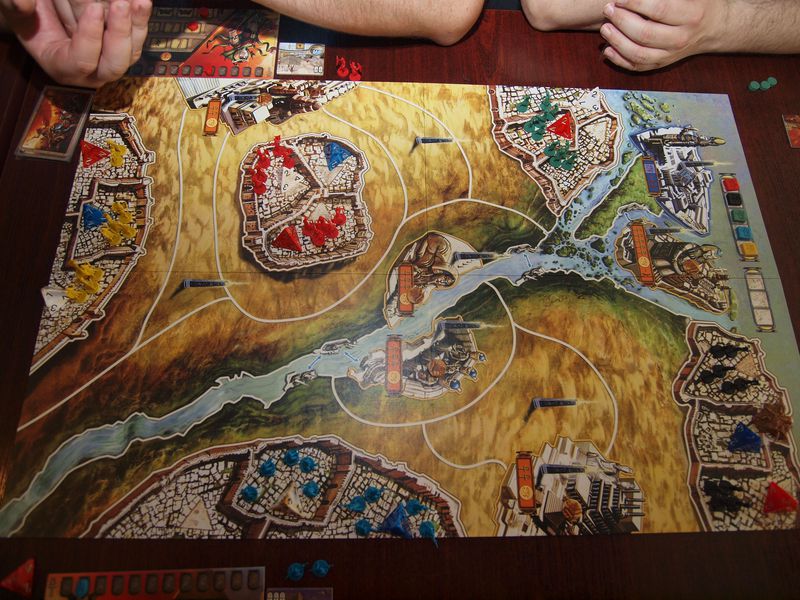
Wade: I generally play a distinct Red strategy fueled by a few key, White tiles. Or, if Ta-Seti is in play, I’ll go Black and White. But I love, especially when teaching it, to just try something new, something different and see how it all plays out. But the other thing I really enjoy about Kemet is that It’s quick. Like “Damn, that was fast even by classic Risk standards.”
Marc: And that presents an obvious question about the breakwater of 8 VP (quick game) vs 10 VP (long game): Does it seem right? Do you trend toward one or the other because it seems right or solely based on time/player experience?
Wade: I base it on player experience. But, honestly, once you get your “engine” running, it is usually only a matter of one day phase between 8 and 10 VP. Now, when I say it is quick, I’m not talking about using the Path to Ta-Seti from that expansion. I never, ever use it. I do, however, wholeheartedly recommend it for the Black Pyramids/Power Tiles alone. And quick isn’t even in the dictionary of “Kemet with the Seth expansion added.”
Marc: But what does a Red/White approach mean, other than the obvious “offense with mana”? Any specific creatures or tiles that are a must for what you usually do? I’m typically a Stargate guy. Even at the cost of Prayer Points, the ability to warp around the board from anywhere is too tempting. I’m also a Scarab employer. I heard somewhere that you’re a Scorpion guy…

Wade: * whispers * Okay, don’t tell anyone but If I’m playing my “A” game… I’ll usually go Red pyramid 1 and White 2. The level 2 White tile Holy War (which rewards Prayer points for each enemy slain) is my first pick or the Level 1 Red tile Charge! (+1 Strength when attacking), depending on what others have put out for pyramids and levels. Then I use my two teleport/movement actions to take over a couple of Temples. If I’m lucky, someone has already “blinked” and moved into those Temples “too early” in the phase and I get a chance to get a permanent victory point by beating them in combat, but my real objective is to be able to inflict damage and use Holy War. I’m willing to give up a perma victory point to get what will come out to 9 Prayer Points between enemies I slay and withdrawing troops. Last action of the day phase, I upgrade my Red pyramid to Level 4 at a cost of 9 prayer points, which i should have. First action of the 2nd Day phase, I have my Scorpion. Everything else is gravy, if someone is silly enough to leave me the Red tile to add additional damage to all my attacks, it’s going to be a tough game for them. My “perfect storm” pick would be snagging the Mummy (Level 4 White tile) as my second monster. BUT (big "but"), the real reason I absolutely LOVE Kemet is all of those plans are totally in flux. Tiles are constantly taken before you have a chance to snag them. You must adapt, change plans, and generally roll with the punches.
Marc: I’m a Mummy guy, too! If the opportunity arises to upgrade White that quickly, I will jump up there and snag him because he not only gives you Movement and Strength, but also a precious extra Divine Intervention card. Just like Inis’ Epic Tale cards, the more DI cards you have, the more surprises you can spring on your opponents. OTOH, I’m kind of a purist when it comes to the Black tiles. They don’t seem to adapt well to my style of play, which is essentially not to leave myself in the position where someone trying to move into my spot is an issue.
Wade: Final note on Kemet: if you don’t have a custom insert that helps you with tile layout, I highly suggest picking up coin collecting sheet pages. They are pages that coin collectors use to put coins in a binder. However, the sheets that hold 5 rows of coins in 4 columns are perfect for holding each set of white/red/blue/black tiles. Instead of organizing and laying out the tiles by the dozen, you simply flip out 3 or 4 pages of tiles already in these sheets. Bam, the majority of the game is set up.
Wade: Inis is the devil. I mean, it’s right there in the victory conditions. Be Brenn over 6 opposing clans. Be present in territories with 6 sanctuaries. Be present in 6 different territories. 666. I think Iron Maiden has a song called “Inis” on their latest album.
Marc: I actually never noticed that. Things are starting to make so much more sense… Maybe it’s because, moreso than the other two, Inis simply isn’t a “wargame”, per se. The clan figures are basically placeholders to emphasize the card play.
Wade: This really becomes apparent during the card draft. Many times you’ll find the last action cards that are being passed around during the draft are the ones that initiate a Clash. I’m sure there is a moral lesson of “War as a last resort” in there somewhere. And the Geis card is effectively a “NOPE!” card. I think the key to playing this card is judging the smugness on the face of an opponent as they play their card and, if it hits the proper degree of pride, you simply throw down the card and say “Nah, that didn’t happen.”

Marc: And this is where the unusual drafting technique really comes to the fore. Unlike almost any other drafting game (Magic, Blood Rage, etc.), you can toss away cards that you’ve selected in a previous pass if you see something that works better (aka something that someone was crazy enough to pass to you.) That’s a really dynamic approach to drafting that I’ve always found appealing, especially since the available stack of drafted cards is so limited.
Wade: The limited number of cards is one of the things that makes this game my wife’s favorite of the trio. No one is able to build a superpowered machine by synergizing tiles like you can in Kemet. At the beginning of every round, everyone is pretty much on an even playing field. You don’t have to memorize and strategize to step in and play. A veteran Kemet player has a distinct advantage over newcomers, as that game pays out for the knowledge you take into the game. As for Cyclades, fuck if I know what it takes to win but it apparently isn’t the knowledge I’ve taken into it.. But Inis’ small deck of Action cards make it a smooth, flowing game. You add in Territory cards at a trickle and that makes them easier to digest. I don’t think I have ever played a game of Inis where my opening strategy ended up actually being my final strategy. It’s about adapting to the game state. Not only from turn to turn but, as you said, from one draft pass to another.
Marc: And that brings up an unusual fact about the boards, overall. Cyclades’ board state is set in stone: this is how the board will be for this game, islands or Titans. OTOH, the board in Kemet is very tactically important. The Obelisks will often determine fast moves, especially because they don’t use up movement capacity. If your troop + Scarab can move twice, when you take a movement action from a pyramid, you can teleport and then move twice. On the third hand, the board in Inis can actually change from turn to turn, with new territories and the often crucial Advantage cards appearing but, unlike Kemet, not changing the tactical nature of the board in play, but possibly changing the strategy, since now there’s one more open space to occupy with your clans. It can get dizzying.
Wade: Too true. We’ve been playing Inis and we’ll take a smoke break and I’ll sit there staring at the board for the entire 10 minutes, thinking of various ways to achieve my goals or adjust my goals accordingly. And then I will totally misjudge how important a single figure is to another player and we’ll get into a war of attrition. Since you can discard a card OR lose a figure in a battle you can suddenly find your hand of cards is reduced to one or two cards and all you wanted to do was take down one enemy so you could play your spoony Bard card and claim a Deed token.

Marc: OK. But on that strategy question: What are your approaches? For Inis, I’m one of those people sending you those Clash cards, because they’re often not as useful in terms of reaching your goals as the more prima nocta approach of simply multiplying in spots and then casually entering new ones. However, if I see those come around repeatedly in the first couple drafts, I’ll often start gathering them, especially if I see someone using the various discard cards like Master Craftsman, because I know they’ll be short on Action cards to play in any kind of Clash, at which point I can secure a position in two territories, rather than wait to migrate to one. Timely use of Raid, that lets me pull one of their few cards and force them to pass early is another usual tactic. But I also tend to focus in on a couple territories if they come up, like Valley and Forest, to keep either a steady clan growth or a steady supply of Epic cards at hand.
Wade: I’m always told I’m obsessed with the Festival card. This is especially true if I’m teaching the game because most people see “Dudes on a Map” and assume they should constantly be fighting over territory. This usually buys me time as they mess with other people. Anything that has the option to draw an Epic Tale card is also appealing to me. I like Sanctuary since it can further a goal and give you an Epic Tale card. Bard is great as a reaction card to an unexpected assault or simply hold onto it and trade it for an Epic Tale card. Druid is awesome for taking a discarded card and putting it into your hand. It borders on push-your-luck if you are looking for one specific card and you aren’t quite sure it is the one, single card that wasn’t used in the draft. Have i listed off all the cards yet? That’s the beauty of Inis: every card has a time and place where you really, really want it.
Marc: Exactly. For being seemingly the simplest of the trinity, it still has enormous depth because the simplicity gives far-reaching effects to almost every card in the game. My group often disdains the Hills card for simply being another way to pass and not having a “real effect”. I keep trying to convince them: “Pass without the risk of losing my later actions so I can watch what you do for a round and then attack? Yes. Thanks very much.”
So that’s the Trinity. There’s a ton more to say about all three of these games (and even more when the first expansion for Inis, Seasons of Inis, is released later this year(!)) but this is at least a general insight into Matagot’s unusual series of DoaM/not DoaM games.
 Games
Games How to resolve AdBlock issue?
How to resolve AdBlock issue? 